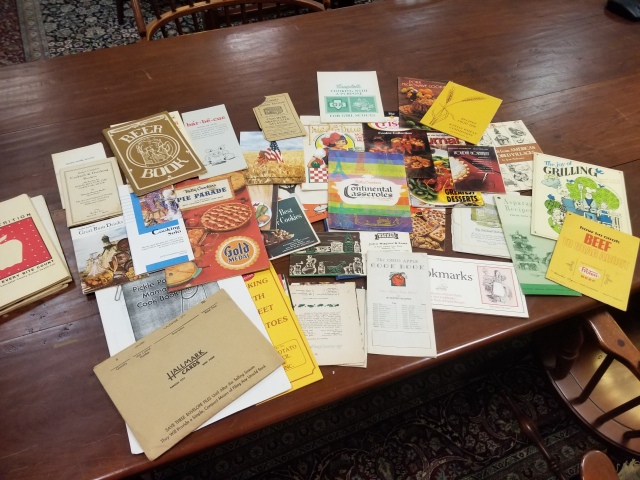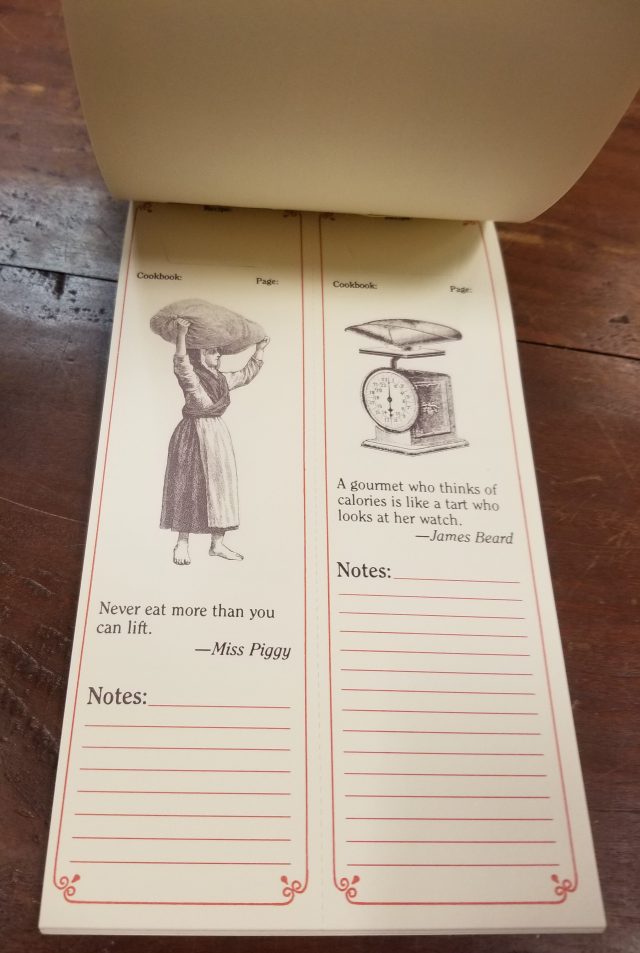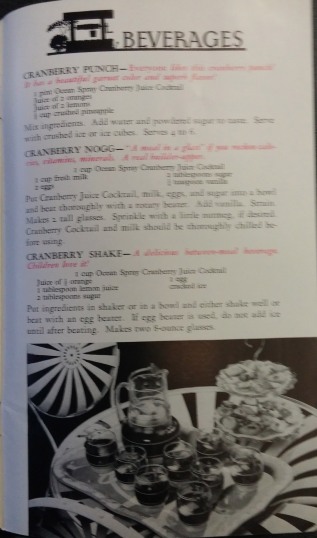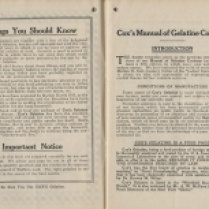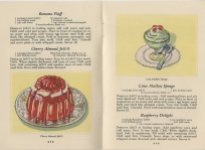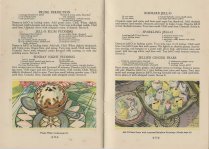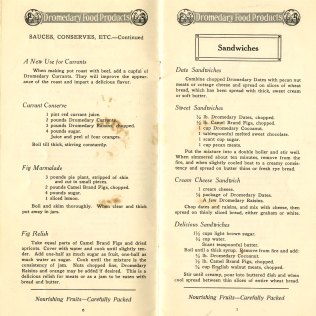A couple of weeks ago, one of my colleagues in the library showed up on my doorstep with an old advertisement. She picked it up, thinking I would want it for the culinary collection–as, of course, I did. After all, it featured one of my favorite obsessions and frequent blog topic: gelatin. Today, however, I won’t be subjecting you, dear Readers, to a list of terrifying recipes or a series of taunts at this wiggly food I just can’t bring myself to eat. Rather, I thought I would take an opportunity to write a post about following a trail and where it could lead someone. But first, Jell-O!

This ad comes from 1921. Jell-O had, at that time, already been a commercially made product for 22 years (since it’s developer sold it to the Genesee Pure Foods Company). The original four flavors (strawberry, raspberry, lemon, and orange) were joined by cherry and peach, rounding out the six flavors advertised. Interestingly, during the 1910s and 1920s, Genesee Pure Foods Company flirted with a chocolate flavored gelatin (not a pudding or mousse mix), but it didn’t seem to have the popularity of fruit flavors and it was gone by 1927. By 1921, though, Jell-O was a household name in convenience, efficiency, and eating. For over 20 years, the company had been advertising in innovative ways, like giving away free little recipe booklets to tempt shoppers to try something new at home.
Anyway, back to our meandering: This ad came to me in a plastic sleeve of sorts, nestled against a piece of cardboard for support. After taking in the full-color image itself, a perfect Jell-O dessert set against a vase of flowers, I found myself, as usual, overly elated about a piece of ephemera. It wasn’t until later I noticed that the dessert is even shown in a ray of sunlight! We have lots of Jell-O booklets starting as early as the 1900s, but we didn’t yet have a large size (8″ x 11.75″) like this one. It was a bit of an odd size: not quite right for a magazine, too large and lacking in fold lines to have been in a package, and not a standard paper sheet. “Is there anything on the back?” I asked my colleague-turned-donor. She didn’t know, but we were going to find out. It turns out, there was–and one that explained a bit more:

As it turns out, this Jell-O ad had been neatly cut away from the back of a seed catalog, apparently as a collectible item. While the booklets are common collectibles and while the idea of cutting items out of other items isn’t new, I hadn’t quite seen it in action in this way. At times in our history, for example, people would excise pages from illuminated manuscripts to sell off piecemeal–but Jell-O ads?
Anyway, following the trail: The seed catalog, as you can see, was for one Stark Bro’s. nursery. Stark Bro’s, like Jell-O, is a company not unheard of here in Special Collections. In fact, they are responsible for one of my favorite items on our shelves, which I’ve written about before. Although this particular page shows mostly flowers and a couple of tomatoes, Stark Bro’s were equally well-known for fruit trees–making this catalog a great venue for a product in which people were experimenting with, well, embedding fruit. This brings us to an important consideration for advertising: knowing your product(s) and knowing your audience. You don’t always see advertisements for non-seed catalog products in seed catalogs. But, if you’re going to bring in outsiders, make it something that matches up!
So, the point of all this is that individual items, even a single advertisement from the back of a long-gone seed catalog, can be of use and can lead us somewhere. In this case, it might be interesting to pursue how long the advertising relationship existed between these two companies, how fruitful (pun intended) it might have been, and how direct the link between the development of fruit-filled gelatin recipes and these kinds of advertising relationships. Or one could pursue a more-single sided topic, like how the Jell-O advertising changed over time (the artwork, the methods, the partners. etc.)
This particular advertisement will be joining the Culinary Pamphlet Collection (Ms2011-002) along with the myriad of other Jell-O and other gelatin booklets. Just in case it piques your interest…

